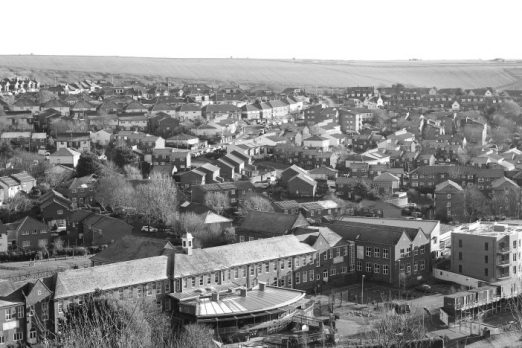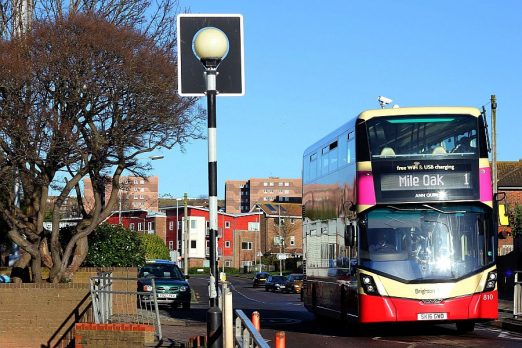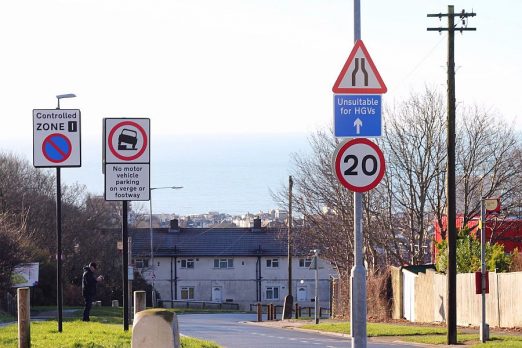Street Source is a regular feature showcasing photography from Brighton over the course of a month by one of our local photographers. The idea is to share spontaneous moments around town – be it incidental street scenes, snapshots of people’s lives or images of the city as a landscape. Each month we ask a different local photographer to participate and this month it was the turn of Jon Southcoasting.
“This month I thought I would take a whirl around one of the less ventured parts of the city: Whitehawk.
“The Whitehawk estate on the eastern fringes of Brighton has been through some rough times and once had a bad reputation but in recent years it has developed a new sense of purpose. People who don’t live there might imagine it’s all tower blocks and empty property but Whitehawk now has a pleasant calmness and in many ways it’s a fine example of good social housing. I think we could do with more places like Whitehawk.”

It can all seem a bit grim on first appearances.

The name is derived from the White Hawk neolithic enscarpment from which you can still look down on the valley, once known as ‘Whitehawk Bottom’.


It’s not all tower blocks. In fact the estate (like Moulescombe, further north) had its origins in the 1930s Garden City ideals, providing homes for city residents who had to be rehoused in the great Carlton Hill slum clearances. The prospect of houses with electricty, running water and gardens was a major enticement compared to the housing that had existed previously in the centre of the city.

Towards the end of the last century the estate had become quite rundown, but since then it has received significant investment from ‘New Deal for Communities‘ which has brought the community back to life.

Most people visit Whitehawk by bus or car which can mean you miss the large amounts of greenery that are hidden from the main road and are more clearly visible from above.

It can look decidely messy at times…

…but there are hives of industry too.

The Lidl supermarket is the main food outlet for residents, but you could easily miss the other local shops. Pack of Cards began life as a card shop but nowadays seems to sell virtually anything.

St Cuthman’s church was first constructed in the 1930s but had to be rebuilt after it was destroyed by German bombs in the Second World War.

The bus below is named after Ann Quin, a well-regarded local novelist who drowned in the sea off Brighton in 1973 at the age of 37.

Apart from the green, the other overriding colour in the valley is red. That’s not just a comment on local politics.




Despite the New Deal for Communities investment, there are still plenty of signs of poverty around the estate. This empty flat is no doubt awaiting refurbishment before new tenants can move in.

There’s also a surfeit of street furniture in some places, not least the north west corners where a new parking scheme is settling in and the idea of not parking on verges feels like a strange innovation.

A variety of wildlife still thrives in the valley. Don’t feed the chickens, however, as they are already very well looked after by the children at the nursery.

Occasionally the estate receives some other kinds of special visitors.

*****
Photos and text by Jon Southcoasting
To see more Street Source photos: Click Here


